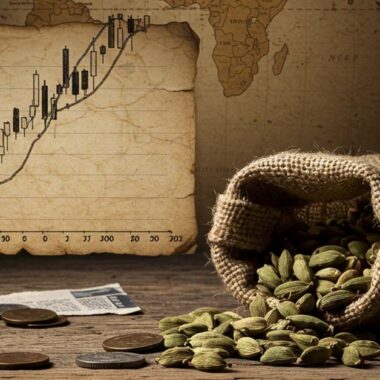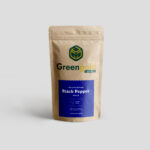Cardamom is one of the most valuable spices in global trade, with high demand in the Middle East, Europe, and the U.S.. Exporting cardamom can be highly profitable, but it comes with its own set of challenges. Let’s explore the key obstacles and the biggest opportunities in the industry! 🌍📈
⚠️ Challenges in Cardamom Exporting
1️⃣ Strict Quality Standards & Regulations 📜🔍
Many countries have strict import regulations on spices. Exporters must ensure:
✅ Pesticide residue limits are met.
✅ Proper drying & storage to prevent contamination.
✅ Certified organic standards for premium markets.
💡 Solution: Get export certifications like FSSAI, ISO, and USDA Organic to access international markets!
2️⃣ Fluctuating Cardamom Prices 📉📈
Cardamom prices change due to:
📌 Supply & demand fluctuations.
📌 Weather conditions affecting harvest.
📌 Government policies & export bans.
💡 Solution: Monitor Greengold Guide’s Daily Price Update to stay ahead of market trends and sell at the right time!
3️⃣ High Export Duties & Tariffs 💰🚧
Many countries impose heavy tariffs on spice imports. This increases the cost of exported cardamom, making it less competitive.
💡 Solution: Exporters should negotiate bulk deals and explore markets with lower import taxes.
4️⃣ Competition from Other Producing Countries 🌍🏆
While India is the largest cardamom exporter, countries like Guatemala and Sri Lanka are emerging as strong competitors due to lower prices.
💡 Solution: Focus on quality! Indian cardamom is highly aromatic and commands higher prices in the premium market.
5️⃣ Logistics & Transportation Issues 🚛📦
Cardamom is delicate and loses quality if not stored properly. Poor logistics can lead to:
❌ Moisture damage affecting aroma & shelf life.
❌ Delays in shipping, leading to losses.
❌ Customs clearance issues.
💡 Solution: Use vacuum-sealed packaging and trusted shipping partners to ensure safe & fast deliveries.
🚀 Opportunities in Cardamom Exporting
✅ 1️⃣ High Demand for Organic Cardamom 🌱
Consumers are willing to pay premium prices for organic cardamom, especially in Europe & the U.S..
💡 Opportunity: Farmers who switch to organic farming can export at higher profits!
✅ 2️⃣ Expanding Markets in Asia & Africa 🌍
While the Middle East remains the top importer, new emerging markets are:
🔹 China – Growing interest in herbal remedies.
🔹 Japan & South Korea – Demand for premium-grade spices.
🔹 Africa – Expanding spice industry.
💡 Opportunity: Exporters can diversify markets to avoid dependence on traditional buyers.
✅ 3️⃣ Value-Added Cardamom Products 🏭💰
Instead of exporting raw cardamom, businesses can sell:
✔️ Cardamom-infused teas & coffees ☕
✔️ Cardamom essential oils & extracts 💧
✔️ Spice blends for gourmet cooking 🍛
💡 Opportunity: Value-added products fetch higher margins and reduce competition from bulk spice traders.
✅ 4️⃣ E-commerce & Direct-to-Consumer Sales 🛒📦
Exporters can bypass middlemen and sell directly to global consumers through:
🌍 Amazon & other marketplaces.
🌍 B2B spice trading platforms.
🌍 Dedicated e-commerce websites.
💡 Opportunity: Selling directly increases profits and builds brand loyalty!
🎯 Final Thoughts: Is Cardamom Exporting Profitable?
✅ Yes! Despite challenges, cardamom exports remain highly profitable, especially for those focusing on:
✔️ Premium quality & organic certification.
✔️ Expanding into emerging markets.
✔️ Smart pricing & logistics management.
✔️ Value-added cardamom products.
📌 Want to stay ahead? Track Greengold Guide’s Daily Price Update for real-time price trends! 📊🚀













